In the early stages, when the cornea is still regular, corrective prescription glasses or soft contact lenses can help the patient. As keratoconus advances, the corneal surface becomes increasingly irregular and these options do not help adequately. Treatment options can be broadly divided into stabilizing the cone and visual rehabilitation.
As keratoconus is progressive disorder, it needs to be stabilized or progression needs to be addressed.
Usually it stabilizes naturally after the age of 40 years
It is a non-invasive treatment for keratoconus. It strengthens the collagen tissue which forms the fabric of cornea. It is a simple 30 to 60 minutes in-office procedure. Eye drops containing Riboflavin (Vitamin B2) are applied on the cornea and then activated By Ultra-violet light. This increases the collagen cross linking causing strengthening of cornea thereby stopping it from bulging outwards and arresting keratoconus from progressing further.
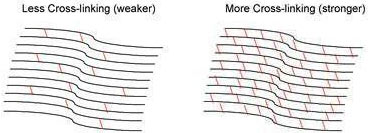
The figures above show the parallel corneal layers (white) and the collagen cross-linking (Red) which are increased after C3-R treatment.
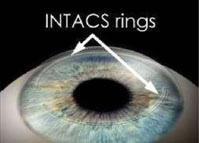
Intacs Rings After Implantation
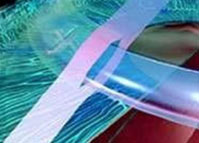
Insertion of Intacs In The Eye
Intacs is a minimally invasive surgical procedure that involves insertion of two tiny, clear crescent shaped implant made of special PMMA, into the cornea. They are reversible and cannot be felt by the patient. They require no maintenance. However, glasses or contact lenses may be required after successful INTACs implantation. They have shown to improve vision and stop progression of keratoconus by flattening the cornea.
Intacs is ideal for adults over twenty one years of age, who suffer from keratoconus. The intacs prescription inserts are advised for patients to correct myopia and astigmatism when contact lenses are no longer suitable.
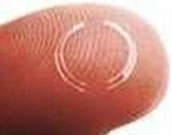
In severe cases, C3-R treatment can also be combined with Intacs to achieve more flattening of the keratoconus cone.
Keratoplasty is a corneal transplantation surgery, where diseased cornea of patient is replaced by healthy cornea from donor eye. As the cornea is replaced by healthy tissue, progression usually stops and then the patient can be visually rehabilitated.
Early and mild cases can be corrected with glass prescription
In the last decade, with newer surgical and technological advances in treatment modalities for keratoconus, INTACS and C3-R have shown promising & encouraging results.
In cases of early or suspected keratoconus with refractive error, LASIK can be combined with crosslinking to give good and stable visual outcome.
ICL is mainly used for treatment of refractive error which is not amenable to LASIK. Recently it has become popular treatment modality for visual rehabilitation in cases of stable keratoconus or after C3R. It reduces the dependence on glasses/ contact lenses and is a reversible procedure. In this procedure a thin collamer lens is inserted inside the eye which corrects the refractive error upto -18D sphere and 6 D cylinders.
In patients with stable keratoconus requiring cataract surgery, Toric IOLs is a good option. It can correct high degree of astigmatism and patient can have better visual clarity after cataract surgery.
This is a surgical treatment, which is reserved for advance cases of Keratoconus, where the vision cannot be improved with glasses or contact lenses. Here the central portion of the cornea is removed and replaced with a donor cornea of similar size. Of all diseases for which keratoplasty is done, keratoconus has the best prognosis. There are three types of keratoplasty
Penetrating Keratoplasty: where all layers of central part of patient’s cornea is cut and replaced by donor cornea.
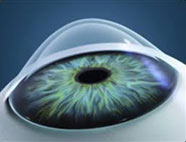
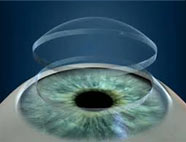
Deep anterior lamellar keratoplasty (DALK): Lamellar keratoplasty is a more advanced form of Cornea transplant. In DALK, anterior four layers of patient’s cornea is removed very carefully sparing the inner delicate layers of Descemt’s membrane and endothelium and replaced by anterior four layer of donor cornea minus Descemet’s membrane. Sparing the Descemet’s membrane, risk of rejection and complications of intraocular surgery is minimized and it offers all the advantages of penetrating keratoplasty
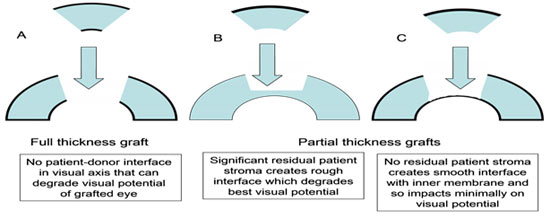
Understanding Keratoconus with Dr. Niteen Dedhia | Keratoconus specialist in Mumbai, India
DEAR DOCTOR DEDHIA & ALL AT LASER EYE CENTER ;
It is been a wonderful experience to know you all and also to be treated by such a friendly and excellent team of professionals. What you all have done for me is just inexplicable all can say is "Thank you so much" for doing this wonder on my eyes.
It really feels great to have an aid less vision.
May God bless all of you all health and happiness and wish you all the very best for your work!
It's been a month since the LASIK surgery and i feel quite relieved not having to bother with contact lenses, glasses and not being able to see. Now, I feel good coz I can see clearly with no hassles, and relieved from glasses after 10 years.